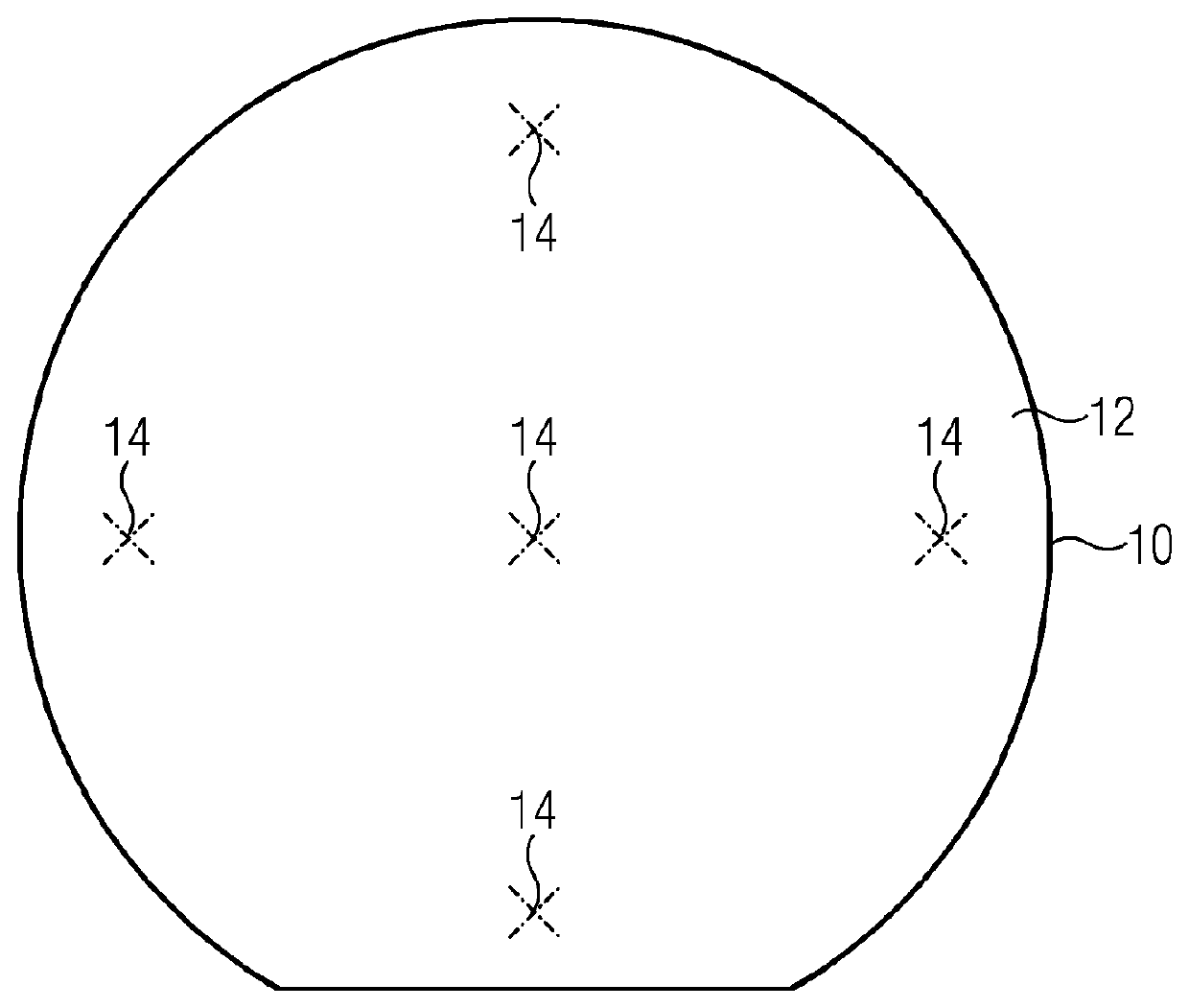Method for producing a polycrystalline ceramic film
a technology of polycrystalline ceramics and polycrystalline ceramics, applied in the direction of vacuum evaporation coatings, electric discharge tubes, coatings, etc., can solve the problems of high cost, low deposition rate, and the majority of the stream of material deposited on the diaphragm and not on the substrate, so as to reduce the fouling of equipment with material caught on the diaphragm, the effect of increasing the operating time of the equipmen
- Summary
- Abstract
- Description
- Claims
- Application Information
AI Technical Summary
Benefits of technology
Problems solved by technology
Method used
Image
Examples
Embodiment Construction
[0022]In order to produce a thin-film bulk acoustic resonator (FBAR), a layer of a piezoelectric ceramic (e.g., ZnO) enclosed between planar electrodes is produced on a substrate 10 (e.g., a silicon wafer). The layer is applied by deposition processes that are known (e.g., sputtering).
[0023]In order to achieve the desired resonator properties, and to make the excitation of shear modes possible, the polar axis of the piezoelectric material is to make an angle with the normal to the substrate surface. For this, a seed layer of about 100 nm thickness is produced. During deposition of this seed layer, a diaphragm system is installed between a source for the particles to be deposited and the substrate surface 12, providing shadowing of certain angles of incidence, so that the particles are deposited on the substrate surface 12 in a preferred orientation with the polar axis tilted in the desired way.
[0024]As soon as the desired seed layer thickness is reached, the diaphragm system may be ...
PUM
| Property | Measurement | Unit |
|---|---|---|
| thickness | aaaaa | aaaaa |
| thickness | aaaaa | aaaaa |
| angle of incidence | aaaaa | aaaaa |
Abstract
Description
Claims
Application Information
 Login to View More
Login to View More - R&D
- Intellectual Property
- Life Sciences
- Materials
- Tech Scout
- Unparalleled Data Quality
- Higher Quality Content
- 60% Fewer Hallucinations
Browse by: Latest US Patents, China's latest patents, Technical Efficacy Thesaurus, Application Domain, Technology Topic, Popular Technical Reports.
© 2025 PatSnap. All rights reserved.Legal|Privacy policy|Modern Slavery Act Transparency Statement|Sitemap|About US| Contact US: help@patsnap.com

